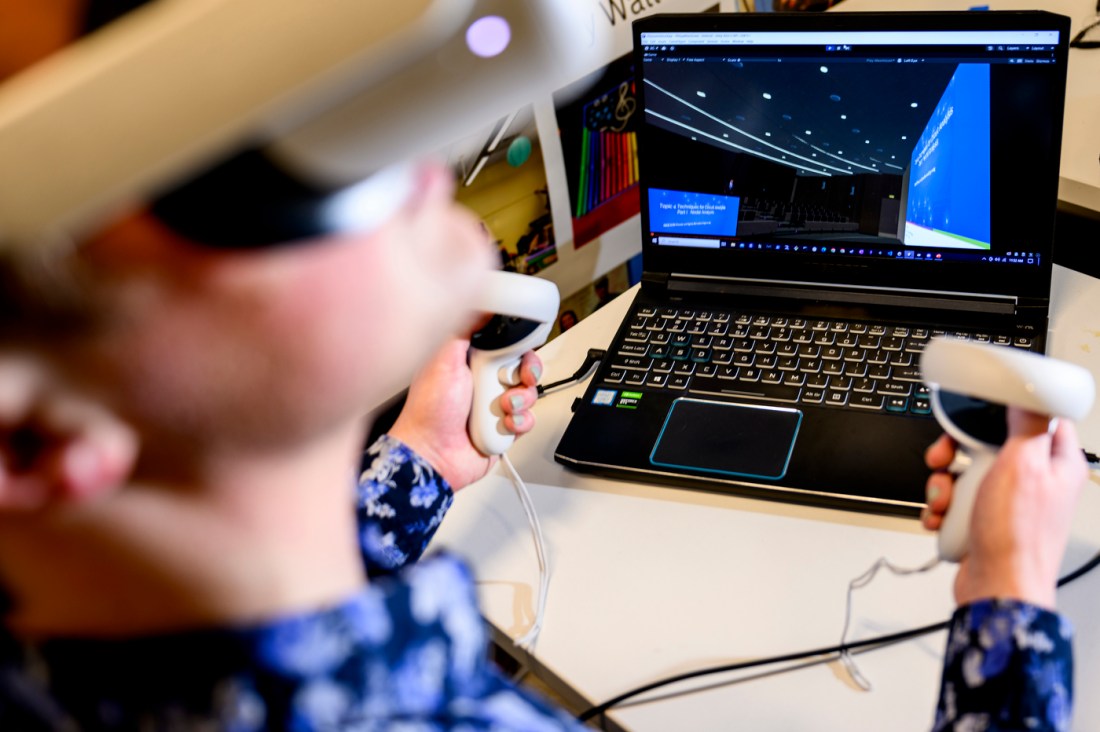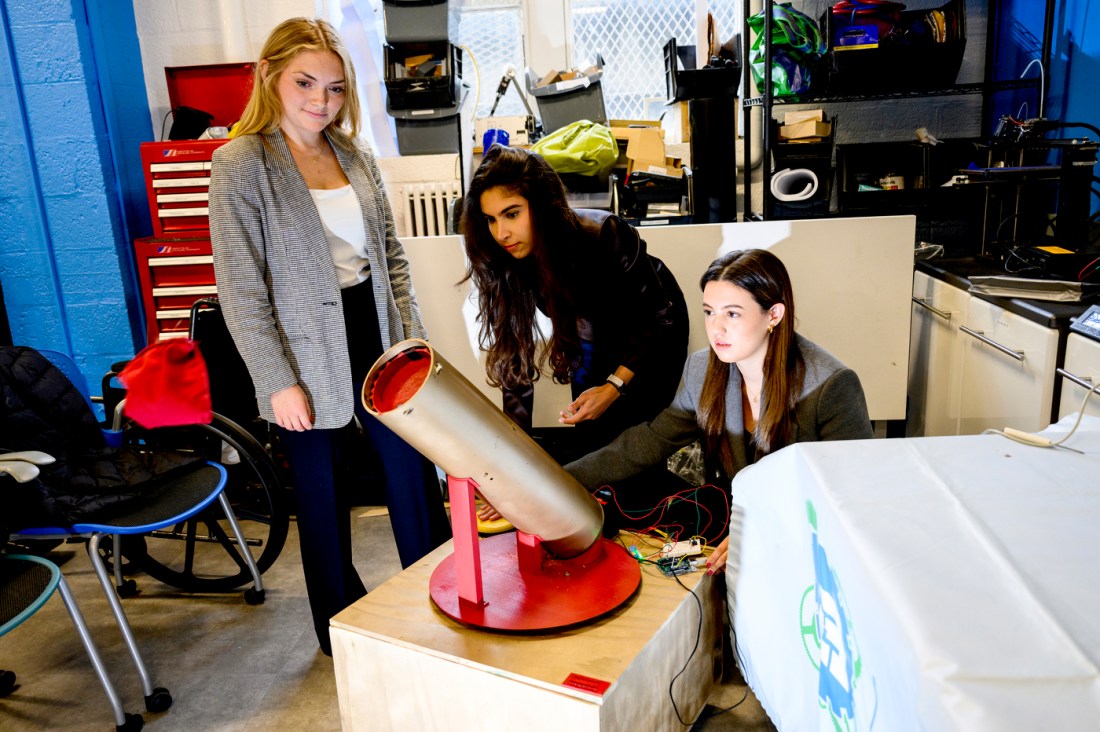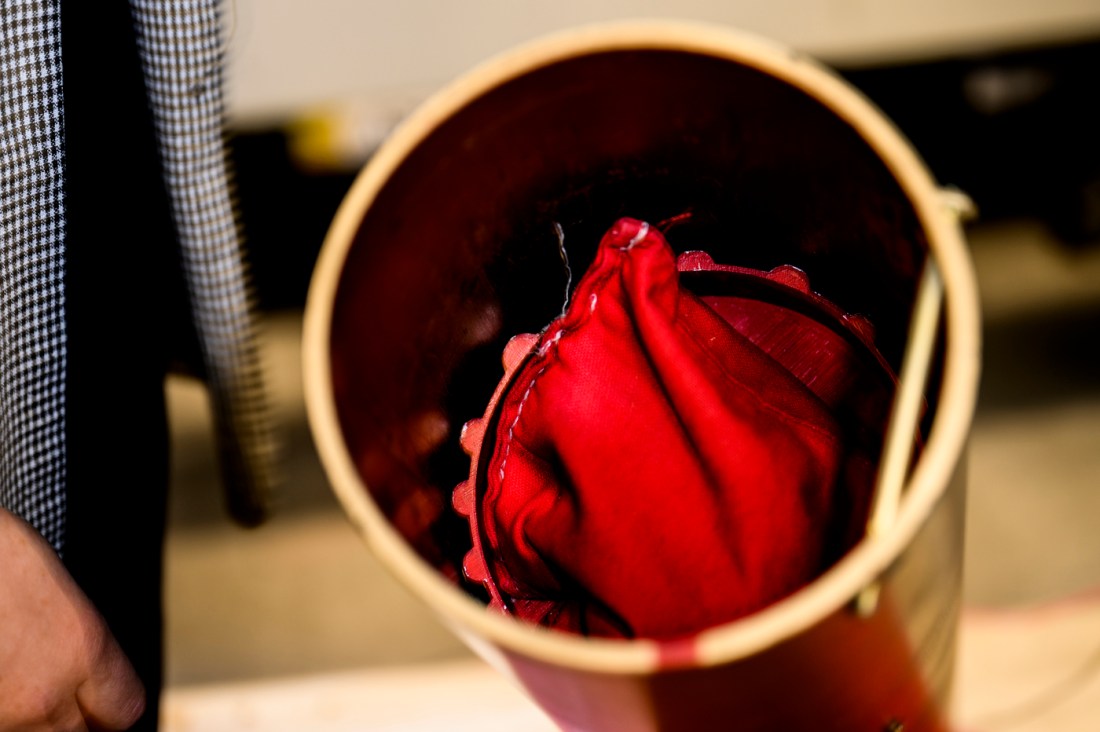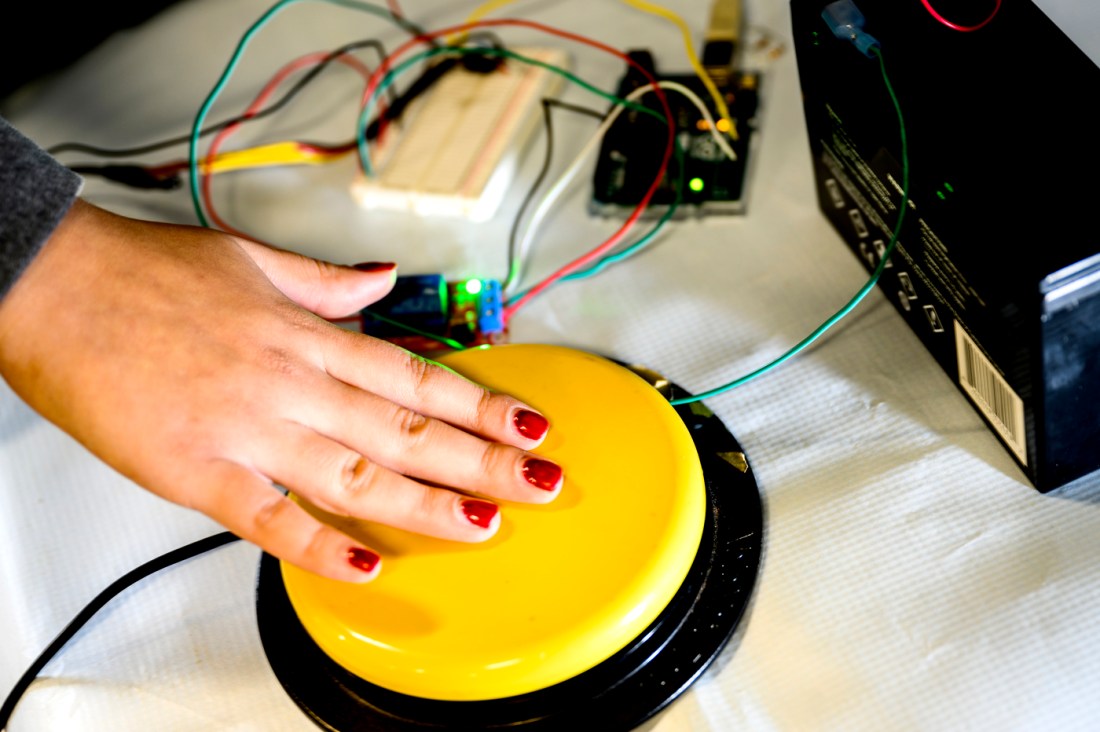From cornhole beanbag launcher to public speaking app, this engineering class enables everyone to play games

Public speaking is something many of us dread, and for those who stutter it can be extra nerve-racking.
The backyard game cornhole, on the other hand, is a joy. But many people with physical disabilities are unable to play.
In both cases, Northeastern University’s Enabling Engineering class is here to help.
“I’m a big fan of devices that can help people,” says Aidan Capaldi as he and fellow students demonstrated a virtual reality app that helps people practice their public speaking skills.
Kate Bevec, whose team developed an accessible, switch-activated beanbag launcher for cornhole, concurred.
“There are lots of options for helping people with disabilities with everyday tasks, which is great, but they have limited options for playing games,” Bevec says.

The Enabling Engineering class applies engineering to enable and empower individuals with disabilities. In the class, teams of students are paired with clients who have requested everything from a camera mount for a filmmaker who uses a wheelchair to a bow and arrow designed for people with visual impairments.
“Our class allows our students to truly immerse themselves in experiential learning,” says Priyanka Jalan, faculty and program manager of the class. “This semester students built low-cost devices to make activities more accessible to individuals with disabilities, areas of concern that are often overlooked.”
Two teams presented their semester projects on Wednesday morning.
The virtual reality public-speaking simulator app arose from discussions with Caren McDonough, speech language pathology clinic director of the Speech Language Hearing Center at Northeastern.
The team’s major objective was to provide a virtual reality simulation app where clients — many of whom stutter — could practice public speaking.
“My goal for incorporating virtual reality into therapy sessions is to allow those who stutter to practice their strategies, or just practice public speaking during realistic scenarios without having to leave the therapy room, as often times they are not ready to practice in other settings,” McDonough said.
To make it as realistic as possible, the team developed an app that puts the user in a simulated lecture hall with several audience members. The app allows the user to access a slide deck as they practice their speech, the camera follows the user’s line of sight as they move around the room, and the user even experiences distractions like sneezes and coughing in the audience.
“It would really help people ease their nerves as if in a real setting where this would occur,” team member Steven Scangas says.



In contrast with the computer coding-heavy app development, a second team demonstrated a more mechanical engineering-based project: a switch-operated beanbag launcher for cornhole.
This client was Jason Luisi, an adaptive physical education teacher, and Mark O’Connor, principal at the William Carter School, a local public school for students with physical and intellectual disabilities.
To play cornhole — where teams take turns trying to toss beanbags through a hole on an angled board — the school relies on aides who physically assist students with their throwing.
The school, however, wanted something to physically engage the students more, as well as give them more independence.
The students created a spring-mounted beanbag launcher.
The launcher integrates a button system that the school uses to enable students with limited physical mobility to participate in a way that is familiar. The base of the launcher also rotates so that students can line up their shot.
“The purpose of the project is to make it more inclusive,” team member Daniela Broad says. “This can also make it more competitive.”
Students on both teams praised the class for providing them with real-world, client-based problems to solve.
“It was nice to see the need in person,” says Muhaiminul Ashraf, whose team developed the virtual reality app. “In computer coding and development you can easily be detached from the client or the product.”
Students also say they enjoyed how they had to work across disciplines: None of the members of the cornhole team were mechanical engineers, for instance, and the app development required working in two computer languages and making them compatible.
Not that the teams didn’t experience challenges. For example, the cornhole team had to figure out largely through trial and error — and a lot of 3-D printing — what size spring to use, how to account for air pressure and surface tension, and how to balance the need to forcefully launch the beanbag with the need for someone to physically prime the spring.
And there are further steps to improve the projects — like extending the launcher’s range.
But having a project that can improve people’s lives was its own reward.
“It was an amazing experience,” Bevec said.
Cyrus Moulton is a Northeastern Global News reporter. Email him at c.moulton@northeastern.edu. Follow him on X/Twitter @MoultonCyrus.






